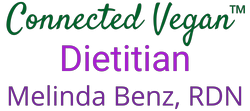
Overview of Nutrient Absorption
Our body requires essential nutrients from food for energy, growth, cellular repair, and maintenance. These nutrients include macronutrients: carbohydrates, proteins, fats, and micronutrients: vitamins and minerals.
However, these nutrients need to be broken down into smaller components before the body can absorb them. This occurs during digestion, where food is broken down and absorbed.
Digestion begins in the mouth as we chew our food, and a series of automatic steps follow.
The brain, hormones, nerves, and gastrointestinal tract organs work together to produce digestive juices that help break down food. These digestive juices include enzymes, stomach acid, and bile.
Most of the nutrient absorption occurs in the small intestine. Once the nutrients are broken down into smaller components, they are transported into the bloodstream and sent throughout the body.
Medical conditions, such as gastrointestinal conditions, can impact nutrient absorption. It’s important to consult with your healthcare team to address your personalized nutritional needs.
Increasing Fat-Soluble Vitamin Absorption
There are two categories of vitamins: fat-soluble and water-soluble, which are processed differently in the body.
Fat-soluble vitamins, which include vitamins D, E, K, and A, are stored primarily in the liver and fatty tissue.
Water-soluble vitamins, including B vitamins and vitamin C, are generally not stored in the body, and any excess amount of water-soluble vitamins is excreted in the urine.
Increased absorption of fat-soluble vitamins, including some healthy dietary fats, such as nuts and seeds, avocado, olives, or plant oil, in meals and snacks can better help the body absorb more nutrients from these foods.
For example, the absorption of vitamin A in a stir-fry containing vegetables like bell peppers and carrots can be increased by adding avocado or nuts or by sautéing the vegetables with a drizzle of plant oil.
Additionally, choosing ground flaxseed instead of whole improves the absorption of essential omega-3 fatty acid content.
Key Takeaway: Plant-based foods containing fat-soluble vitamins D, E, K, and A, like vitamin A-rich carrots or bell peppers, combined with some healthy dietary fats, help the body better absorb these vitamins.
Phytonutrients and Antinutrients in Plant Foods
Phytonutrients, also known as phytochemicals, are naturally occurring compounds found in plant foods such as fruits, vegetables, grains, and legumes.
These compounds give plant foods their color, taste, and smell and protect the plants from environmental effects.
Research suggests that phytonutrients may also offer protection against chronic diseases in humans.
While not considered essential nutrients, many plant foods contain phytonutrients, which often act as antioxidants or health-protective compounds.
For example, carotenoids are a large group of phytonutrients that include beta-carotene.
Beta-carotene is found in many orange fruits and vegetables, such as carrots and cantaloupe. It converts to Vitamin A in the body, supporting eye health, and is considered an antioxidant.
Another group of carotenoids includes lycopene, commonly found in red and pink fruits and vegetables, such as tomato products and watermelon.
Lycopene has been associated with supporting heart health and acts as an antioxidant.
Both beta-carotene and lycopene components in plant foods are more readily absorbed when cooked – for example, pasta with sautéed vitamin A-rich vegetables topped with tomato sauce can make for a delicious and nutrient-rich meal!
Key Takeaway: Incorporating a variety of colorful fruits and vegetables in our diet helps ensure we’re getting a wide range of vitamins, minerals, antioxidants, and phytonutrients.
The term “antinutrients” refers to natural compounds found in various plant foods that protect plants from environmental effects but may also inhibit the absorption of specific vitamins and minerals in the body.
Interestingly, antinutrients are also associated with potential health-protective qualities.
Goitrogens and Iodine
Cruciferous vegetables such as broccoli and Brussels sprouts contain a compound called goitrogens, which are categorized as an antinutrient. These compounds can affect thyroid function and contribute to the development of goiters (an enlarged thyroid).
However, cruciferous vegetables have been studied for their potential cancer-preventative properties linked to the antinutrient compound glucosinolates.
It’s important to note that goitrogens are generally more of a nutritional concern when higher amounts of goitrogen-containing foods are consumed without meeting adequate iodine needs in the diet.
Therefore, it’s essential to ensure that the daily Recommended Dietary Allowance (RDA) for iodine is met to maintain a nutrient balance.
Other types of considered antinutrients include oxalates and phytates:
Oxalates and Calcium Absorption
Oxalates are a naturally occurring compound found in higher amounts in specific leafy green vegetables, such as spinach, Swiss chard, rhubarb, and beet greens, also known as high-oxalate leafy greens.
Oxalates are of particular interest in vegan nutrition because they bind to calcium, reducing its absorption in the body.
Therefore, vegan nutrition experts generally recommend choosing low-oxalate leafy green vegetables, including kale, bok choy, turnip greens, mustard greens, okra, and broccoli, more often to help meet calcium needs in a plant-based diet.
Another health consideration regarding the consumption of high-oxalate foods generally pertains to people who are prone to kidney stones.
If your healthcare provider has recommended limiting high-oxalate foods for kidney stone prevention, it can be helpful to consult with a registered dietitian to discuss and plan for your personalized nutrient needs.
Phytates and Mineral Absorption
Phytates are naturally occurring compounds found in whole grains, legumes, nuts, and seeds.
They can reduce the absorption of some minerals, specifically iron and zinc, in plant-based foods.
Phytates have also been associated with having antioxidant properties.
While choosing refined grains, such as white bread, would reduce the phytate content, it would also remove many minerals and dietary fiber; hence, selecting whole grains most often is the optimal choice for overall health promotion.
Certain food preparation techniques can help reduce the phytate content in plant foods to boost iron and zinc mineral absorption.
Fermented foods like sourdough bread, tempeh, and miso can increase mineral absorption.
Additionally, leavened grain products, like bread, can improve mineral absorption compared to unleavened grain products, such as crackers.
Soaking grains and beans before cooking and incorporating sprouted grains, such as sprouted whole-grain bread, are other approaches that can decrease the phytate content and increase mineral absorption.
Having canned beans on hand is convenient for adding already-cooked beans to meals!
When selecting canned bean varieties, a nutrient consideration is opting for low-sodium or no-added-salt options and rinsing the beans to reduce the sodium content.
Boosting Iron Absorption
An effective way to increase the absorption of non-heme iron (plant iron) is to combine vitamin C-rich foods with iron-rich plant foods in the same meal.
For example, tofu stir-fry with bell peppers, oatmeal with strawberries or a glass of orange juice, or whole-wheat pasta with broccoli.
Another way to help improve iron absorption is, when possible, planning to drink coffee and tea in between meals due to a naturally occurring compound called tannins, which reduces iron absorption.
Key Takeaway: Aiming for a well-balanced plant-based diet with a wide variety of fruits, vegetables, legumes, whole grains, nuts, and seeds can provide many health-promoting benefits that outweigh the potential impact of antinutrients.
Take-Home Message
Various dietary approaches in our daily routine, including cooking, food preparation, and combining foods, can help increase nutrient absorption in a plant-rich vegan diet. We can utilize the nutrient-boosting strategies that are most practical for our lifestyle to simplify meal planning!
If you’re looking for nutritional guidance and support on your plant-based journey, please reach out to schedule a free 20-minute discovery call here!
For more educational content on various plant-based and vegan nutrition topics, check out my YouTube Channel here!
References
Your Digestive System & How it Works. (2017, December). National Institute of Diabetes and Digestive and Kidney Diseases. https://www.niddk.nih.gov/health-information/digestive-diseases/digestive-system-how-it-works
Basile, E. J., Launico, M. V., & Sheer, A. J. (2023, October 28). Physiology, Nutrient Absorption. StatPearls – NCBI Bookshelf. https://www.ncbi.nlm.nih.gov/books/NBK597379/
What Are Phytonutrients? (n.d.). Have A Plant. https://fruitsandveggies.org/stories/what-are-phytochemicals/
Are Anti-Nutrients Harmful? (2022, January). The Nutrition Source. https://nutritionsource.hsph.harvard.edu/anti-nutrients/
Mangels, R., Messina, V., & Messina, M. (2021). The Dietitian’s Guide to Vegetarian Diets: Issues and Applications. Jones & Bartlett Learning.
Norris, J., & Messina, V. (2020). Vegan for Life: Everything You Need to Know to Be Healthy on a Plant-based Diet (Second Edition). Hachette Go.
Disclaimer: This blog post is provided for informational and educational purposes only and should never be relied upon in any way as medical or mental health advice. Always consult your physician or other qualified healthcare provider for any health-related questions and concerns or before implementing anything you may learn through this blog post.
(Please note that external links open in a new window)

